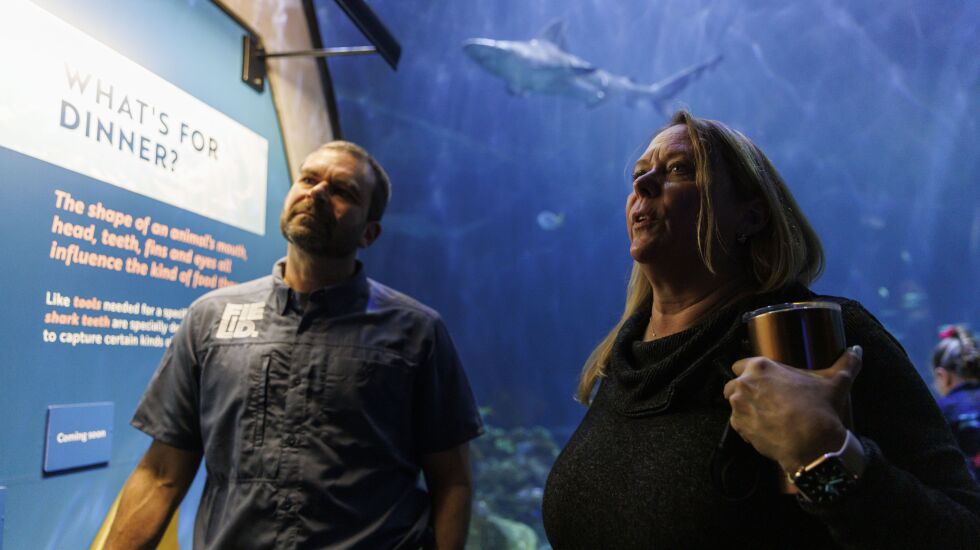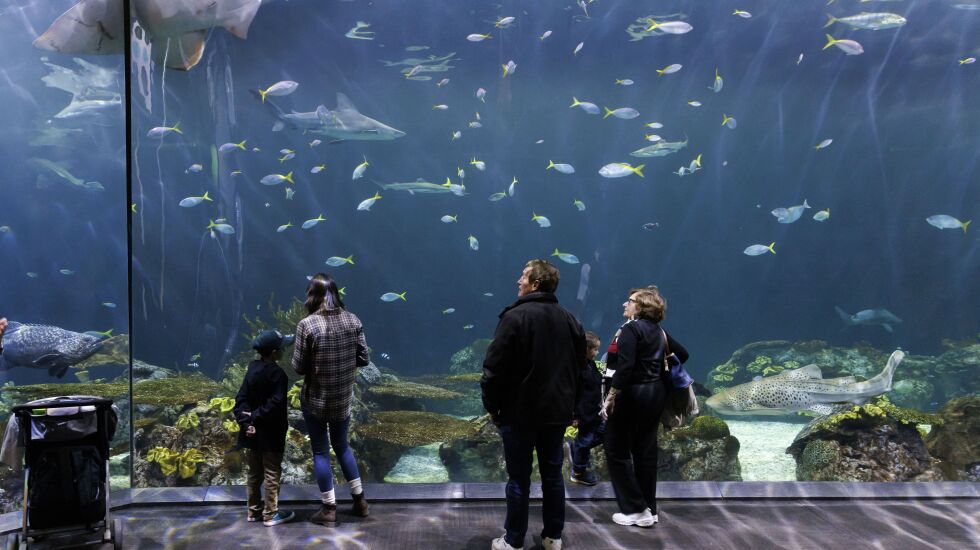
The Shedd Aquarium is heralding a “virgin birth.”
Instead of a manger, think of a giant saltwater tank filled with hundreds of fish.
It was there that a zebra shark named Bubbles eschewed the attention of two male suitors and decided to go it alone in a phenomenon known as parthenogenesis.
Instead of mating, Bubbles used her own genetic material to fertilize two eggs, Shedd Aquarium officials announced Monday.
The two little eggs hatched in February 2016 and researchers learned of the peculiar event through genetic testing that’s done to prevent inbreeding in future generations of the endangered species.
The baby sharks survived only 6 months.
The timing of Monday’s announcement may seem odd because it comes six years after their birth. But it coincides with a paper published in the “Journal of Fish Biology.” Its authors were Lise Watson, the Shedd’s assistant director of animal operations, and Kevin Feldheim, lab manager at the Field Museum.

“We think this occurs because it’s kind of a last-ditch effort for these females to pass on their genes. ... We think it’s actually relatively common,” said Feldheim, noting rates of survival might be different in the wild.
“It happens most of the time when a female is never with a male or when a male has been removed from the habitat,” he said. “What’s interesting about this case is the presence of the two male sharks.”
How to explain it?
“Mate selection preferences,” Watson theorized. “Some females just may not be receptive to some males.”

After impregnating herself, Bubbles attached the two eggs to coral at the bottom of the giant fish tank. A short time later, divers in scuba gear removed them so they didn’t get eaten by other fish in the exhibit.
After they hatched, they survived for 6 months, a common life span among the four other documented instances of such zebra shark births at aquariums in Australia, Dubai and California.
The phenomenon has been recorded not only in multiple species of sharks but in a variety of other creatures, including insects, birds and lizards.
Rates of survival among species differ. It’s a relatively young field of research and survival in the wild can differ from survival in captivity, said Feldheim. One species of lizard thrives through the method, he noted.
Parthenogenesis is not possible in mammals, Feldheim said, declining to delve into any religious beliefs that might run counter to the science.

As for Bubbles, who got her name because she likes to play in the bubbles emitted by scuba divers, she’s alive and well — all 6 feet and 120 pounds of her.
On Monday she swam through the waters of the Shedd’s Wild Reef Shark Habitat, unsurprisingly oblivious to the loss of her two babies or the news conference taking place on the other side of her glass enclosure.
“There’s no rearing of sharks. Mothers lay their fertilized eggs and swim off. That’s it,” Watson said.







